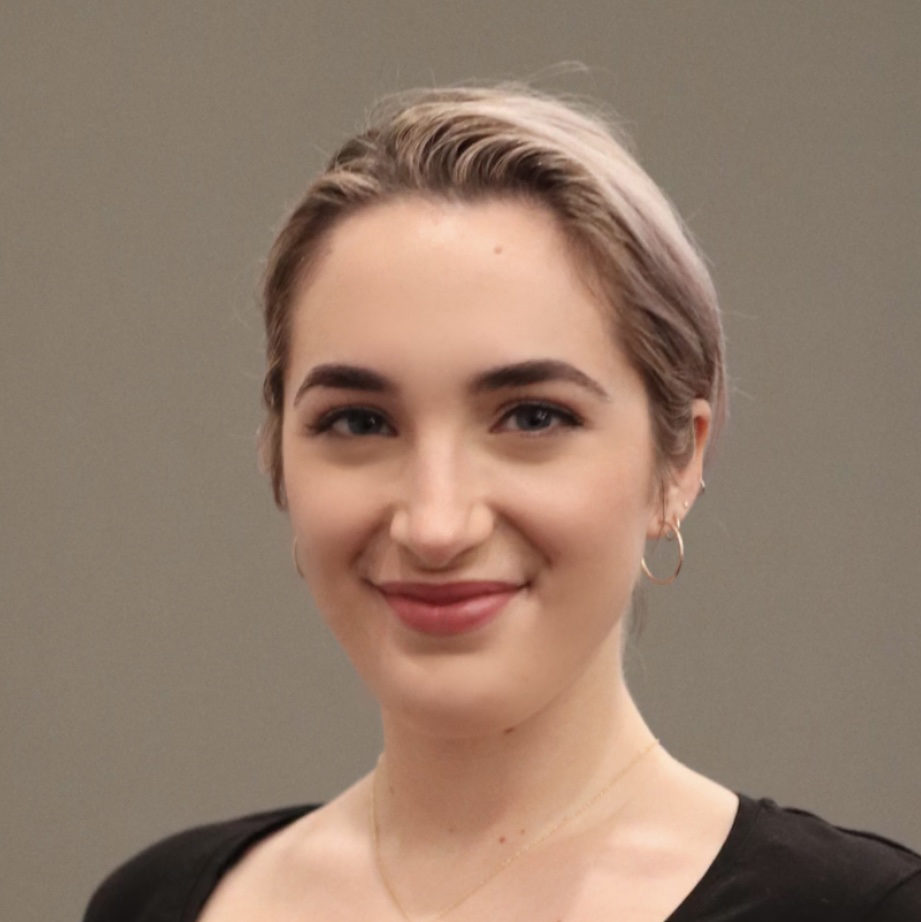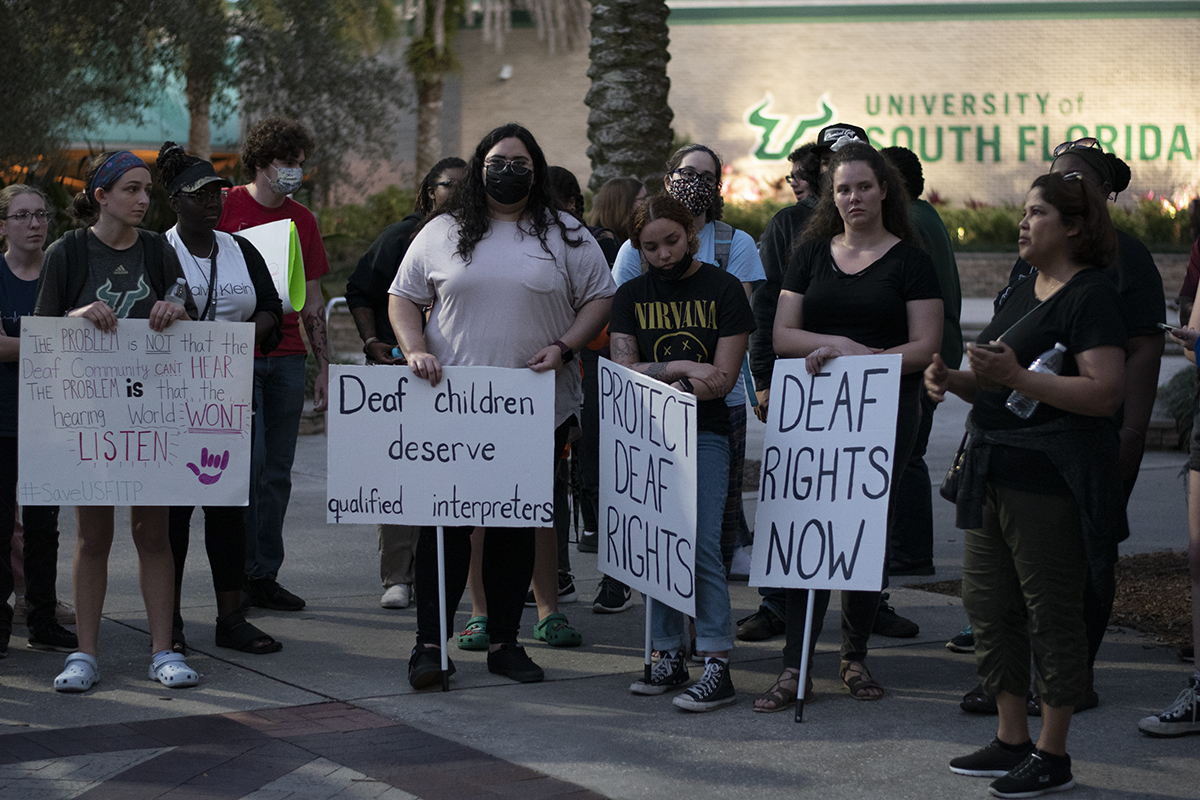Pictured above: Dozens of demonstrators stood outside the Marshall Student Center at USF Tampa on Feb. 17 following recent rumors of the ASL program’s dissolution.
Courtesy of Aubrey Carr | The Crow’s Nest

Pictured above: Sarah Serralta is a USF Tampa communication sciences and disorders 2018 graduate.
By Sarah Serralta
Phone calls, taxes and doctor’s appointments: day-to-day tasks we don’t particularly enjoy, but also take for granted. Now, imagine trying to do these tasks but nobody speaks your language. For most Deaf and Hard of Hearing people, it is tasks like these that can become frustrating, especially without access to a sign language interpreter, and can even lead to dire consequences.
Tampa Bay, home to one of the largest Deaf communities in the nation, according to Tampa Bay Times, depends on USF Tampa’s Interpreter Training Program (ITP) to produce qualified interpreters. This program works to bolster accessibility, but recent talks suggest that it may shut down in the next three years.
Last week, I caught wind of potential changes to the program, including Dean Julie Serovich’s recommendation to dissolve the ITP. The recommendation alone gutted me. I sat down on the phone with a colleague distraught, because this potential threat to the program has come after a long string of losses.
The American Sign Language (ASL) living learning community, the ASL lab, and the Deaf studies program. We were being told it was about restructuring, but it began to feel personal, and I no longer wanted to be on the defensive, or worse, passive.
My experience working with the Deaf and Hard of Hearing community has exposed me to a life full of humor, resilience and openness. It is this kind of spirit that contributed to the large rally in response to the potential dissolvement of the program.
What is happening right now is indicative of how difficult it is to create and maintain support systems which boost accessibility and language equity. This is one of only two programs in the state of Florida. Nationally, there are 16 sign language interpreter training programs, according to the Commission on Collegiate Interpreter Education.
Meanwhile, there are millions of Deaf or Hard of Hearing people in America. Securing an interpreting-specific degree is not required to become a nationally certified interpreter, but would you want a lawyer with a degree in culinary sciences? Or an accountant whose expertise is botany?
This is the path most interpreters take to become a professional, but with fewer programs available, the stream of qualified interpreters is struggling to keep up with demand. There are over 10,000 certified interpreters in the U.S., according to Nimdzi Research Group.
At this rate, similar to other industries, burnout is on the table. I frequently work in healthcare spaces and have worked through the entire pandemic providing interpreting services. Under this tight labor market, fulfilling interpreting requests has become more difficult. These conditions threaten our industry’s ability to thrive and there are more consequences.
Over the course of the pandemic, I have seen children isolated in their homes, unable to communicate with their families. I have fielded calls with domestic violence survivors reaching out for support, risking their lives to place a call on their phone. I have navigated healthcare spaces where what started as a check-up, but later became clear more serious intervention was needed.
It’s not just about doctor’s appointments, it is about human rights and having the resources to actively participate in society. Everybody wants to talk about diversity and inclusion, but we rarely consider disability in this movement.
As we evolve to become more inclusive in core systems like education and healthcare, we cannot leave disabled people out of the conversation.
The Deaf and interpreting community rallied on Feb. 17, meeting face to face with Dean Serovich and Associate Dean Jennifer Lister. At times, it was contentious and highly emotional. At the core, that conversation is what needed to happen prior to any recommendation or decision being made.
We demanded transparency, program and curriculum retention, faculty protections and reinstatement of previous resources. Dean Serovich listened and extended an invitation to continue the conversation with community leaders in a round table discussion. This is a positive step forward that could not have happened if we hadn’t made our voices heard. It’s unclear if this will move the needle in the direction that we would like, but it begs the larger question: How can we collectively do better?
My hope is that this conversation reinvigorates discussions nationwide about accessibility and language equity, so that those who are most marginalized can live their life as freely and fully as they desire.



